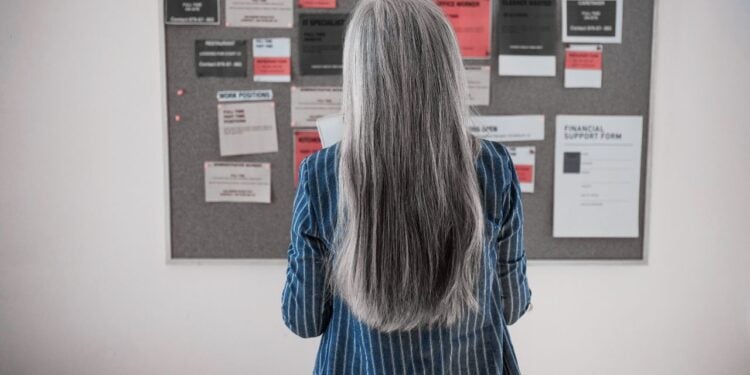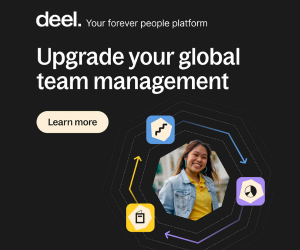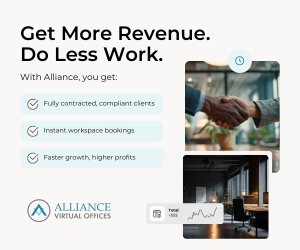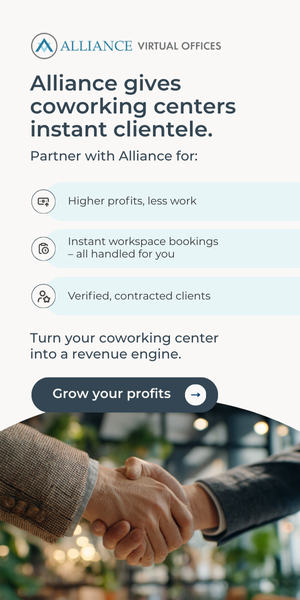- Bias against older workers costs the U.S. economy $850 billion annually.
- Diverse workplaces that include age diversity, outperform others in revenue and profit.
- AI can help reduce age bias by flagging ageist language, standardizing interviews, and focusing on qualifications over demographic factors in hiring processes.
The potential economic contribution of workers 50+ could increase by $3.9 trillion in a no-age bias economy. Yet, despite overwhelming metrics outlining the benefits of an intergenerational workforce, older workers are among the most overlooked by employers who are hiring.
Facing age discrimination during the hiring process is just the start. Even after being hired, nearly 2 out of 3 workers ages 45 and older have seen or experienced age discrimination while on the job, according to the results of an AARP workplace survey.
Tackling age-related barriers in the beginning stages of the hiring process is a vital step for workforce development, benefiting businesses and boosting the economy.
Bias against older workers cost the U.S. economy an estimated $850 billion in gross domestic product (GDP) in 2018. Surveys show that diverse workplaces – including age and gender-diversity – actually generate 19% higher revenue and 9% higher profit margins than companies with below-average diversity.
Today’s employers are already using artificial intelligence (AI) to improve workplace efficiency and productivity, and enhance brainstorming. AI can also be a valuable tool for ensuring an equitable and age-inclusive hiring process.
How to Remove Unconscious Age Bias From Hiring
There are many ways hiring teams can use AI to remove unconscious bias in the hiring process. Here are three ways to use AI to improve applicant screening.
1.Identify Ageist Language in Job Descriptions
Language within job descriptions is often the first form of ageism that older applicants experience.
There are widespread misconceptions about older workers and technology. 92% of workers over the age of 50 are actually interested in learning new professional skills, including digital skills, but ageist job descriptions can keep them from even pursuing opportunities requiring technology skills.
Specific requirements around technology proficiency can filter older job seekers out of the hiring process before it even begins.
For example, phrases like “digital native” can indicate a preference for younger workers and eliminate older job seekers based solely on age, rather than ability.
To eliminate unconscious bias and potential discriminatory language, AI tools can be a savvy way to flag ageist wording and provide suggestions for more age-inclusive language.
2.Reduce Bias in Resume Review
Humans are not perfect when it comes to identifying their biases and actively working against them. Reading many resumes and cover letters can be tedious and lead to hiring decisions based on factors beyond an applicant’s qualifications.
To create a more equitable selection process when sorting through stacks of resumes, AI Natural Language Processing tools can help to narrow down applicants based on skill, experience, and qualifications while ignoring demographic factors.
3.Standardizing Interviews
AI can help hiring teams standardize interviews with a structured and unbiased line of questioning. Many interviews are now conducted virtually. For these interviews, AI-generated transcripts can provide an objective evaluation of a candidates’ response without being swayed by non-job-relevant factors such as their age.
Why it Matters
Employers are facing a labor shortage. In the U.S., there are 8 million open jobs and 6.8 million unemployed. The untapped potential of older adults remains a largely overlooked situation that can help provide some support to the workforce.
A recent survey conducted by CWI Labs revealed that 81% of older workers aged 50+ believe employers want younger applicants, and 59% of older workers in the U.S. looking for jobs feel their age has created obstacles in their search for employment.
Despite older workers actively seeking to contribute to today’s workforce, ageism remains a significant obstacle to their success.
Older workers bring a wealth of expertise, experience, and mentorship to the workforce. Older workers are also among some of the most loyal and dedicated workers. Specifically, the median tenure of workers ages 55 to 64 is triple the tenure of workers ages 25 to 34.
Humans should always be the last word in hiring decisions, but AI can help employers to embrace and achieve more age inclusive hiring practices.
A workforce that includes older workers is one that is well-rounded and well-equipped for the always-changing world of work, and age inclusivity in hiring is just the start.


 Dr. Gleb Tsipursky – The Office Whisperer
Dr. Gleb Tsipursky – The Office Whisperer Nirit Cohen – WorkFutures
Nirit Cohen – WorkFutures Angela Howard – Culture Expert
Angela Howard – Culture Expert Drew Jones – Design & Innovation
Drew Jones – Design & Innovation Jonathan Price – CRE & Flex Expert
Jonathan Price – CRE & Flex Expert













